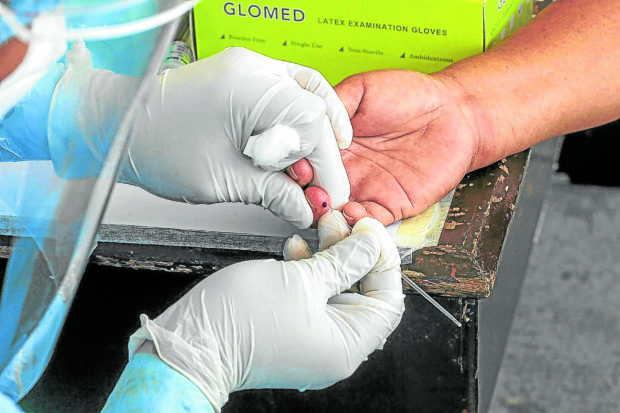MANILA, Philippines — The Department of Health (DOH) is now gathering evidence that could corroborate a report from Europe that people with certain blood types are more susceptible to infection from the new coronavirus.
Health Undersecretary Maria Rosario Vergeire on Saturday said that when the report came out, the DOH started collecting information to validate it.
“We will be providing information to the public once we have an adequate number that is significant for us to [prove] this circumstance that one blood type is more prone [to COVID-19],” Vergeire said.
“Like what we have always said, whenever there are reports such as this we gather enough evidence first before we say if it is true or not,” she added.
On Wednesday, European researchers said in their study published in The New England Journal of Medicine that people with Type A blood were at higher risk of getting COVID-19 and falling severely ill, while risk was lowest among those with Type O blood. The study involved 1,980 patients from seven hospitals in Italy and Spain.
“Our genetic data confirm that blood group O is associated with a risk of acquiring COVID-19 that was lower than that in non-O blood groups, whereas blood group A was associated with a higher risk than non-A blood groups,” the report read.
The researchers noted that “further exploration of current findings, both as to their usefulness in clinical risk profiling of patients with COVID-19 and toward a mechanistic understanding of the underlying pathophysiology, is warranted.”
Local evidence
According to Vergeire, the DOH’s testing guidelines may be revised once local evidence proves that those with Type A blood are more at risk of getting COVID-19.
“As you can observe, covered by our expanded protocols for testing are those from high-risk groups. So once we have evidence saying that those with this blood type are at high risk of getting COVID-19, we may include them in our expanded protocols for testing,” she said.
Earlier, two subgroups were added in DOH’s risk-based testing strategy following the increase in the country’s capacity to test for more COVID-19 cases. Subgroup E are front-liners indirectly involved in the health response to COVID-19, while subgroup F are the vulnerable patients like those with cancer or undergoing dialysis.
943 new PH cases
Vergeire did not say how the DOH would gather the evidence to corroborate the European study and how long that effort would take.
A standard DOH patient case investigation form for COVID-19 does not include information on blood type.
COVID-19, a severe respiratory disease, is caused by the SARS-CoV-2 virus, which emerged late last year in Wuhan, capital of the central Chinese province of Hubei.
2nd highest single-day increase
The World Health Organization on Saturday reported over 8.5 million confirmed COVID-19 cases worldwide, including 455,231 deaths.
The Philippines also on Saturday recorded its second highest single-day increase of 943 new cases, raising the national total to 29,400.
Death toll
The DOH said 578 of them tested positive for the virus within the last three days. Central Visayas accounted for 296, more than half of these cases, followed by the National Capital Region with 218.
The DOH said 272 patients raised the total number of those who had recovered to 7,560.
The death toll rose to 1,150 after 20 patients succumbed to the ailment, 15 of whom died from June 5 to June 16.
For more news about the novel coronavirus click here.
What you need to know about Coronavirus.
For more information on COVID-19, call the DOH Hotline: (02) 86517800 local 1149/1150.
